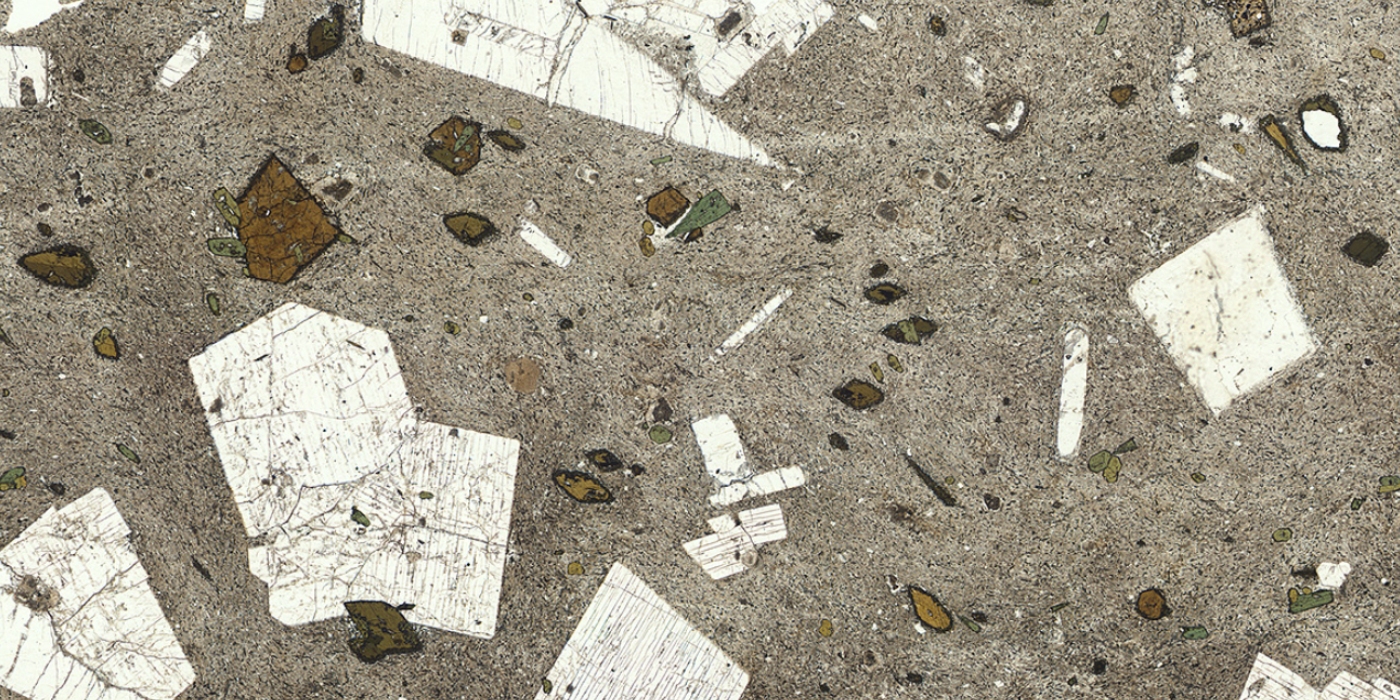
Opening of the Manual of Minerals
While petrographic thin sections can provide a great variety of invaluable geological information, if you can't identify the different features, minerals and textures that they might show, they might as well be a form of abstract stained glass in miniature.
To help with this, the Open University has now introduced its Manual of Minerals pages, a series of guides to the various aspects of petrography. Each page is designed to guide students through the different features displayed by crystals in thin section, the characteristics of different minerals, the textures that illustrate the relationships between them and lastly the awkward tricksters that can hinder petrographic analysis. Each feature is discussed in its own section, accompanied with an image of a typical example and a link to a slide from the Virtual Microscope's extensive archive that provides a good illustration of how that feature fits into the broader picture of a petrographic slide.
The idea behind the manual is that it is foremost a practical guide, to help students work through a slide with the minimum of confusion and fuss. However, it is not comprehensive and doesn't delve into either the depths of the optical theory that creates the many effects observed under the microscope or every entry in the list of mineral species. Other resources to help understand these various effects can be found on the Teaching Resources page. Unfortunately, despite (or perhaps because of) the size of the Virtual Microscope's archive, some features are harder to find perfect illustrative examples for; these entries contain explanatory notes and our observant microscope users are welcome to notify us of any examples of these that they might encounter during their explorations of our collections. In this case, please contact us at virtual-microscope@open.ac.uk .